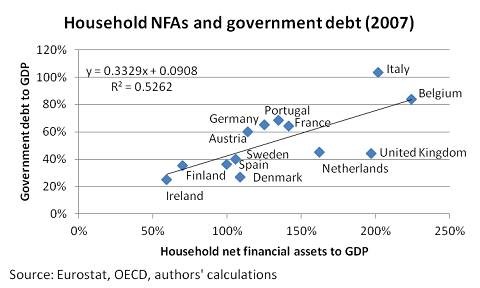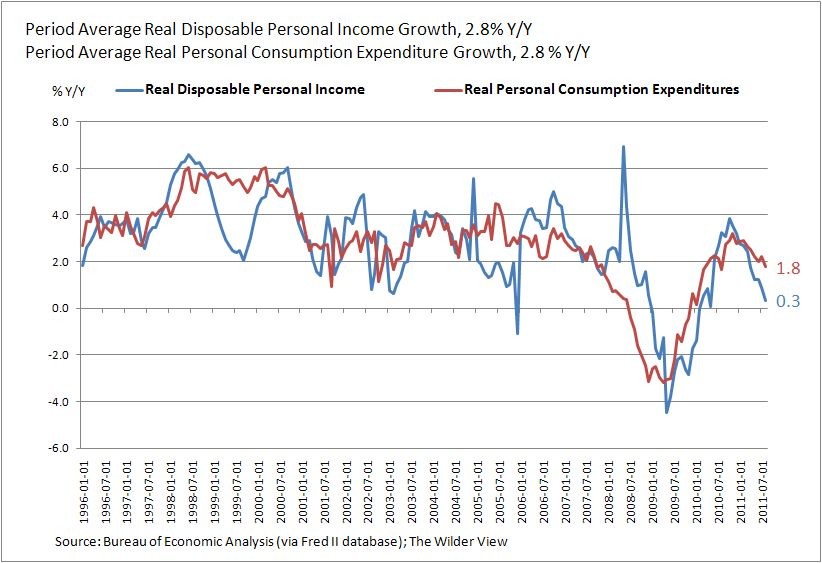EconoMonitor Thoughts From Across the Atlantic Does US Fiscal Policy Stabilize or Destabilize the
Post on: 16 Март, 2015 No Comment

Textbook discussions of fiscal policy describe it as a stabilizing force for the private economy. Fiscal policy can stabilize aggregate demand by adding to demand during recessions and subtracting from demand during business expansions. However, actual fiscal policy of the United States has deviated from this textbook description, especially in the last decade. In the short run, fiscal policy has magnified business cycles by subtracting from demand during recessions and adding to demand during expansions (Frankel 2012). Long-run fiscal policy in the sense of government debt relative to the size of the economy has been ignored by the Congress, and the debt ratio has been allowed to increase to unprecedented levels. Predictability is a third aspect of fiscal policy, and there is growing evidence that increased uncertainty about future fiscal policy has had an adverse effect on the private economy (Baker et al 2013). The contraction of the U.S. economy in the last quarter of 2012 is consistent with this hypothesis. The quality of U.S. fiscal policy has deteriorated in multiple dimensions.
Quantifying Uncertainty
Recent research has attempted to quantify uncertainty about fiscal policy and other variables, and an index of uncertainty is now available at the website of the University of Chicago’s Booth School of Business: www.PolicyUncertainty.com. It is a composite of three measures of uncertainty: newspaper coverage of policy-related economic uncertainty, the number of federal tax code provisions set to expire in future years and disagreement among economic forecasters with respect to future levels of a number of policy-related macroeconomic variables. The index tends to peak around times of fiscal crisis and fiscal deadlines, such as elections, Fiscal Cliffs, etc. So far its highest value was reached during the debt ceiling dispute in July 2011. Use of the index in empirical work indicates that an increase in fiscal uncertainty reduces business investment and purchases of consumer durables. Fernandez-Villaverde et al have constructed a model showing that an increase in fiscal uncertainty by a given amount has the same negative effect on aggregate demand as a tightening of monetary policy of a given magnitude. In other words, increasing fiscal uncertainty during times when the economy is at below its potential speed is like pushing the brake pedal with the left foot simultaneously with the right foot pushing the monetary policy accelerator.
Sources of Increased Fiscal Uncertainty
What are the sources of increased fiscal uncertainty? One of them is the debt ceiling not being complemented by a credible longer-term budget framework or at least a “budget deficit ceiling”. Another is clearly the large number of transitory tax measures that are often extended at the last minute. Paradoxically, as we have discussed in earlier posts, the dual mandate of the Fed might also contribute to fiscal uncertainty by providing the politicians with an option to procrastinate important fiscal policy decisions.
The inability of Congress and Presidents to cooperate and act on important fiscal issues has been well-documented, and each party tends to blame its opponent for intransigence. In the House, there is evidence that fewer moderates are being elected by each party, which makes the resulting Congress more polarized. Increasing use of Gerrymandering could be a source of increased polarization. Cook Political Report has indicated that there are now fewer contested House seats than there were a decade ago. The 2012 election continued this trend toward polarization, and the number of moderate ”Yellow Dog” Democrats continues to diminish. There is evidence that Congressional districts have become more homogeneous as liberals tend to reside near other liberals, and conservatives increasingly reside near other conservatives.
Ways to Reduce Fiscal Uncertainty
The suggested ways to deal with the fiscal uncertainty follow directly from the above diagnosis of the situation. First, a credible longer-term budget framework or at least a clear and simple rule aiming for balancing the structural deficit or limiting government debt relative to GDP averaged over approximately five years has to be agreed on. Given the government’s recent record, credibility will be difficult to achieve. The Senate has demonstrated its aversion to an orderly budget process by refusing to pass a budget in recent years. An example to start from could be the approach adopted by Chile (see Dolan, 2011). The substantial impact of the world price of copper on its budget revenue and a couple of other adjustments aside, Chile basically required its budget expenditures in a given year to match the structural revenues, defined as revenues that the government would have achieved if the economy was operating at potential (Daban, 2011).
Second, the number of transitory tax measures has to be reduced to a minimum. These are gimmicks intended to make conditions look more favorable than they are, but they do not fool careful observers. Many of them would not be allowed if used by private firms. This should not prevent tax measures from being used as automatic stabilizers in the future, however, such use should be contingent on the position of the economy vis-à-vis its potential output level rather than entirely discretionary and depending just on action or inaction by the lawmakers.
Polarization makes it difficult to make collective decisions, and decisions about total spending, taxation, and borrowing by the federal government affect all private decision-makers in the U.S. Given the economic importance of the U.S. in the world, increased fiscal uncertainty in the U.S. can also affect the entire world economy. The demonstrated inability of fiscal policymakers to make timely decisions supports the case for major reform of the process by which fiscal decisions are made in the U.S.
Baker, Scott, Nicholas Bloom, Steven J. Davis, and John Van Reenen. 2012.” Economic Recovery and Policy Uncertainty in the US”. VoxEU, 29 Oct.

Daban, Teresa. 2011. “Strengthening Chile’s Rule-Based Fiscal Framework”, IMF Working Paper WP/11/17, January
Dolan, Ed. 2011. “How Intelligent Budget Rules Help Chile Prosper: Lessons for the US”, EconoMonitor, 24 July.
Fernandez-Villaverde, Jesus, Pablo Guerron-Quintana, Keith Kuester, and Juan Rubio-Ramirez. 2011. ”Fiscal Volatility Shocks and Economic Activity”. NBER Working Paper 17317, August
Frankel, Jeffrey. 2012. “The Procyclicalists: Fiscal Austerity vs. Stimulus”. VoxEU, 7 August.
99 20 Responses http%3A%2F%2Fwww.economonitor.com%2Fthoughtsacrossatlantic%2F2013%2F02%2F02%2Fdoes-us-fiscal-policy-stabilize-or-destabilize-the-economy%2F Does+US+Fiscal+Policy+Stabilize+or+Destabilize+the+Economy%3F+ 2013-02-02+23%3A58%3A22 Thomas+Grennes http%3A%2F%2Fwww.economonitor.com%2Fthoughtsacrossatlantic%2F%3Fp%3D99 to Does US Fiscal Policy Stabilize or Destabilize the Economy?
COMPLEX PROBLEMS for USA and this is not now but following before Y the wors is they thinking is power in world. why noone tell tham the true.














